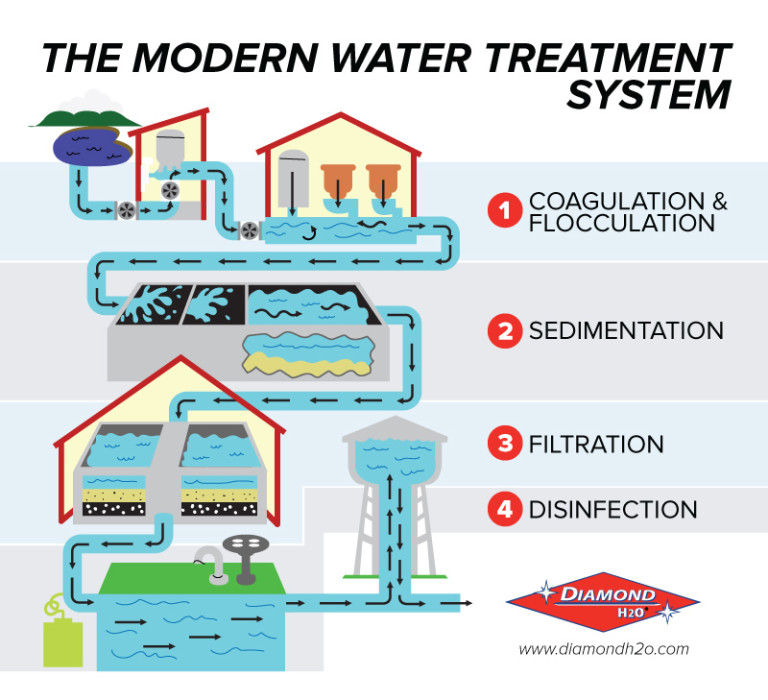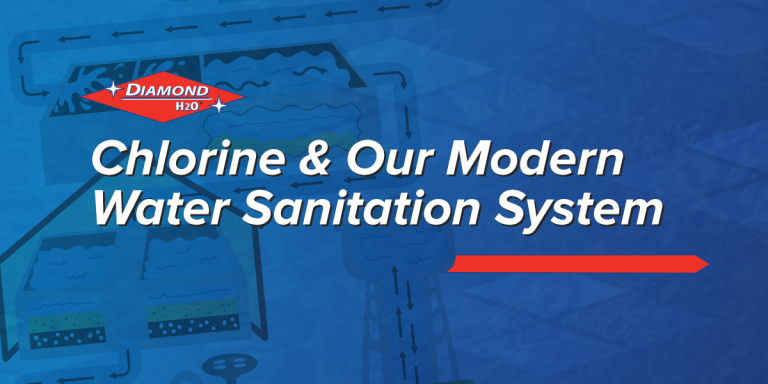Your water goes on a long journey before it reaches your faucet! Our drinking water is subject to different contaminations and our modern water treatment system cleans our water.
As far back as Ancient Greece, humans ported water into cities for drinking, washing, and bathing. It wasn’t until the Enlightenment when humans began to realize they needed to filter and clean the water they needed. Untreated water spreads disease and makes people sick. It took a few centuries for scientists to figure out how.
During the late 19th century, scientists began treating water with chlorine to remove germs. By 1903, they were able to mass treat the water before it reached people’s homes. Today, most water treatment facilities use chlorine to treat its water supply.
Learn more about our modern water treatment and how we use chlorine to clean our water to make it safe to drink.
Modern Water Treatment
The modern water treatment process has four steps.

1. Coagulation and Flocculation
This is when chemicals with positive charge are added to the water supply. Positive charges from the chemicals actually neutralizes the negative charges of the dirt and other dissolved particles in water. The dissolved particles combine with the chemicals to form floc.
2. Sedimentation
The floc settles to the bottom of the water supply.
3. Filtration
The floc stays at the bottom and the clear top layer of water passes through different filters. The different filters are comprised of sand, gravel, and charcoal and these filters remove dust, parasites, bacteria, viruses, and other chemicals.
4. Disinfection
Finally, a disinfectant is applied to the water to remove any parasites, bacteria, and virus. These disinfectants may be chlorine or chloramine.
Disinfection with Chlorine
Chlorine has been used as a disinfectant for drinking water as early as the 1800s in Europe. Chlorine applied to the drinking water removes dangerous contaminants. However, too much chlorine can cause potential health effects.
While the chemicals could be harmful in high doses, when they are added to water, they all mix in and spread out, resulting in low levels that kill germs but are still safe to drink.
Chlorine Statistics
Chlorine (CL2)
Chlorine was first used as a major disinfectant in 1908 in Jersey City, New Jersey.
By 1995, approximately 64% of all community water systems in the United States use Chlorine to disinfect their water.
Chlorine levels up to 4 milligrams (4ppm) are considered safe.
For more information on Wisconsin drinking water, click here to download our ebook The Wisconsin Water Guide

